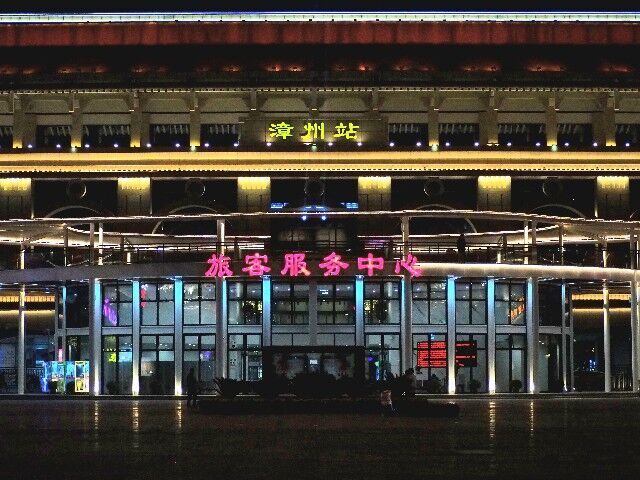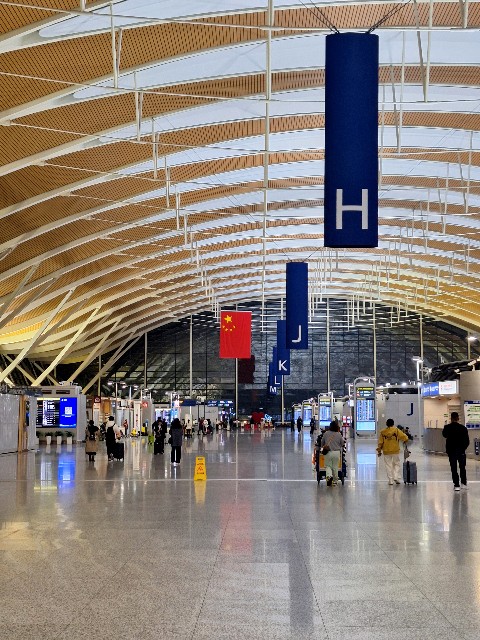
In winter 2024, I visited China after a long absence, embarking on a journey from Xiamen in Fujian Province to the Yongding Tulou Cluster and Gulangyu Island. Throughout this process, I acutely felt an unexpectedly large gap between China’s digitalized transportation system and myself as a foreign traveler. In this article, I’d like to share the various difficulties I actually experienced and how I dealt with them.
China’s Rapidly Digitalized Transportation System

The last time I visited rural China was in late 2019, just before the COVID-19 pandemic began. Compared to then, China’s public transportation had undergone remarkable evolution. Electronic payments and digital ID-based boarding had become the norm for most transportation including subways, high-speed rail, and ferries.
Local people pass through ticket gates as effortlessly as air, simply by holding up their smartphones to scan QR codes. For them, the act of purchasing paper tickets seems to be a thing of the past. Witnessing this scene, I was impressed by the speed of China’s digitalization while simultaneously feeling a hint of anxiety about the journey I was about to begin.
Struggles Using High-Speed Rail: My Experience at Xiamen North Station

This anxiety became reality when I attempted to travel from Xiamen North Station to Nanjing Station. Upon arriving at the station, most passengers would simply tap their smartphones at the automated gates and disappear onto the platforms in an instant. However, we foreign travelers had to walk to the staffed counter at the edge of the station.
Several foreigners were already queuing at the counter, each presenting their passport to purchase tickets. The procedure wasn’t particularly complex, but it was time-consuming. In particular, since passport data needed to be manually entered, the processing at the counter took longer than expected.

While locals smartly passed through gates with just their smartphones, I had to rush to the platform clutching paper tickets and passport in both hands
To make matters worse, even after purchasing tickets, passport presentation was required every time I passed through a gate. While local people swiftly passed by, I needed to show my passport and ticket to staff for verification. This additional procedure caused me to miss my scheduled train, forcing me to wait for the next one.
Difficulties Boarding the Ferry: Traveling to Gulangyu Island

I really wanted to take the early morning ferry
When traveling to Gulangyu Island, I faced an even more troublesome issue. Arriving at the Xiamen pier to catch an early morning ferry, I found that the ticket machines were completely designed for Chinese ID holders. The screen had a section to select ID type, but there was no option for foreign travelers.
Feeling anxious, I consulted with nearby staff, who tried various operations but ultimately couldn’t find a solution. I was finally told, “You’ll have to wait until the staffed counter opens,” and ended up waiting there for over 30 minutes.

Based on the assumption of unmanned payments, there was no staff at the ticket counter
Through this experience, I began to think that system adaptations for foreign tourists might have been deprioritized due to the drastic decrease in international visitors after the COVID-19 pandemic. Even Xiamen, once famous as an international tourist city, was in this situation.
The Barrier of Online Reservation Systems
Many might wonder, “Can’t you just book online in advance?” In fact, I tried to make reservations using local apps like Baidu Maps. However, after proceeding to enter my personal information, I always encountered errors and couldn’t complete the process.
When I consulted with a local friend, they advised, “Maybe it’s because you’re not registered with a Chinese phone number.” But there seems to be a more fundamental issue. From a security perspective, China’s systems need to manage foreign travelers’ movements in a trackable manner, necessitating passport information registration.
Due to this requirement, we foreign travelers are inevitably forced to purchase at staffed counters. This might not just be a technical issue but potentially a larger systemic challenge.
Conclusion: Approaching Inconveniences with the Right Mindset
Certainly, these experiences can have unexpected impacts on your itinerary. Especially if you’re short on time, they can cause significant stress. However, perhaps we can view this as a characteristic aspect of contemporary China.
Through this journey, I learned the importance of anticipating “inconveniences” and acting with ample time allowance. I was also aided by the kindness of local people, and these difficulties remain in my memory as good experiences.
In modern China, where digitalization and management continue to advance, our “analog experiences” as foreign travelers might be mirroring the ongoing changes in this country. The next time I visit China, I want to plan my itinerary with more flexibility, anticipating such situations in advance. And I hope to enjoy these “inconveniences” as valuable opportunities to experience contemporary China.
Next article here





